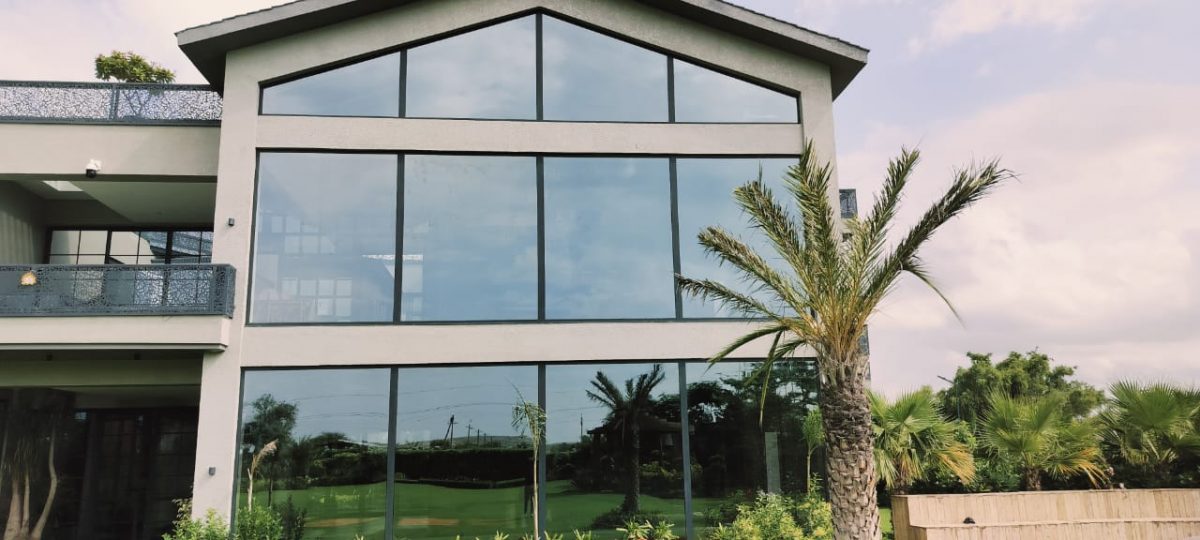Glass is an essential component in modern architecture and contemporary interior design. It is adequately used in residences, commercial spaces and industries. Two contending types of glass are flat glass and float glass. Both have distinct manufacturing processes, properties and ideal applications.
In this blog, we will examine the distinct features of glass and the debate over flat glass vs. float glass to determine which one works best for you.
What Is Flat Glass? Definition and Features
Flat glass is an umbrella term used to describe all glass forms that are manufactured into a sheet form. It includes float glass, tempered glass, laminated glass and coated glass. Flat Glass is made through multiple layers of floating, rolling or pressing.
It is most commonly used in windows, doors, tabletops, shower enclosures and other applications. It can be made using both traditional and modern methods.
Features
- Transparency: Flat glass is light translucent and allows light to pass through.
- Heat Insulation: These glasses keep the building warm.
- Soundproofing: These are acoustic glasses that reduce the sound penetrating indoors.
- Easy to Maintain: Flat glasses are easy to maintain as they do not collect any dust or grime.
- Customisation: These glasses are easily customisable and are available in multiple tints such as bronze, grey, green and more.
What Is Float Glass?
Float glass is a type of flat glass made using the float process. In this process, molten glass is placed in a molten tin bed to ensure uniform thickness, smooth surfaces and high optical clarity.
Float Glass revolutionised glass manufacturing by creating distortion-free sheets with consistent quality. Most flat glasses also use the float process to create distortion-free glasses.
Features
- Clarity: Float glass is clear and provides undistorted views with high light transmission.
- Durability: Float glass is treated and cured in an oven to make it strong and durable.
- Versatility: It acts as the base for various other glass types, such as tempered and insulated glass.
- Cost-effective: Comparatively cost-effective as compared to a lot of flat glasses.
- Customisable: It can be customised into various designs such as tinted, frosted, coated, and more.
- Multiple Designs: This is available in coloured, neutral, reflective and other designs to suit different preferences.
- High Optical Clarity: It is ideal for projects that require transparency and light transmission.
Flat Glass vs. Float Glass
Let’s take a look at the key differences between flat glass and float glass on various parameters:
| Features | Flat Glass | Float Glass |
| Definition | Includes all forms of glasses manufactured in a flat form | It is a specific type of flat glass |
| Manufacturing Process | Includes rolling, pressing or floating methods | Follows a floating process of floating molten glass on molten tin |
| Surface Quality | It may have distortions or irregularities | Smooth, distortion-free thickness |
| Clarity and Transparency | Varies as per the manufacturing process | High optical clarity with minimal imperfections |
| Strength | High strength with a higher level of processing | Standard strength but can be processed into toughened or laminated glass |
| Common Uses | Includes architectural glass, automotive glass and decorative glass | Used in windows, doors, mirrors and glass facades |
| Availability | Includes multiple types of glass (tempered, laminated, etc.) | Serves as the base material for tempered, laminated and other processed glass |
| Cost | Depends on the type and processing | Generally affordable due to mass production |
| Customisation | It can be cut, coated or treated | It can be further processed into various glass products |
Flat Glass vs. Float Glass: Which One Should You Choose?
Choose Flat Glass If:
- You need a specific type of processed glass (e.g., tempered or laminated).
- Your application requires patterned, frosted or tinted glass.
- You are working on automobile windshields or furniture glass.
Choose Float Glass If:
- You need high-quality, distortion-free glass for windows, doors or glass facades.
- You want a base material that can be processed further into toughened or laminated glass.
- You are looking for glass with uniform thickness and high clarity.
Conclusion
Understanding the difference between flat glass and float glass is essential for making the right choice for your project. When selecting glass, always consider quality, durability and intended use to ensure the best results. At AIS Glass, you can choose from a wide selection of flat and float glasses to find the ideal one for residential, commercial or industrial spaces.

